Abstract
Using transient evoked otoacoustic emissions (TEOAEs), a two stage screen with the testing of failures by auditory brainstem response (ABR), has been implemented in Whipps Cross Hospital in East London. From January 1992 to 1995, 11,606 infants received an initial TEOAE test. Once initial difficulties were resolved, coverage of district residents remained stable at 91.5%. Long term follow up of the cohort is being undertaken. Of those receiving an initial test, 13% failed in both ears. Only 1.75% of the cohort failed both stages of the TEOAE screen bilaterally. These infants were tested by ABR. The yield of infants with a bilateral permanent hearing loss of moderate or worse degree was 2/1000. The overall cost of implementing the programme was not prohibitive and the cost per hearing impaired child detected was little more than the widely accepted notional cost of identifying such children through targeted at risk screens. The screen was clearly sensitive. The priority for such universal TEOAE programmes, however, is to increase specificity without losing this sensitivity.
Full text
PDF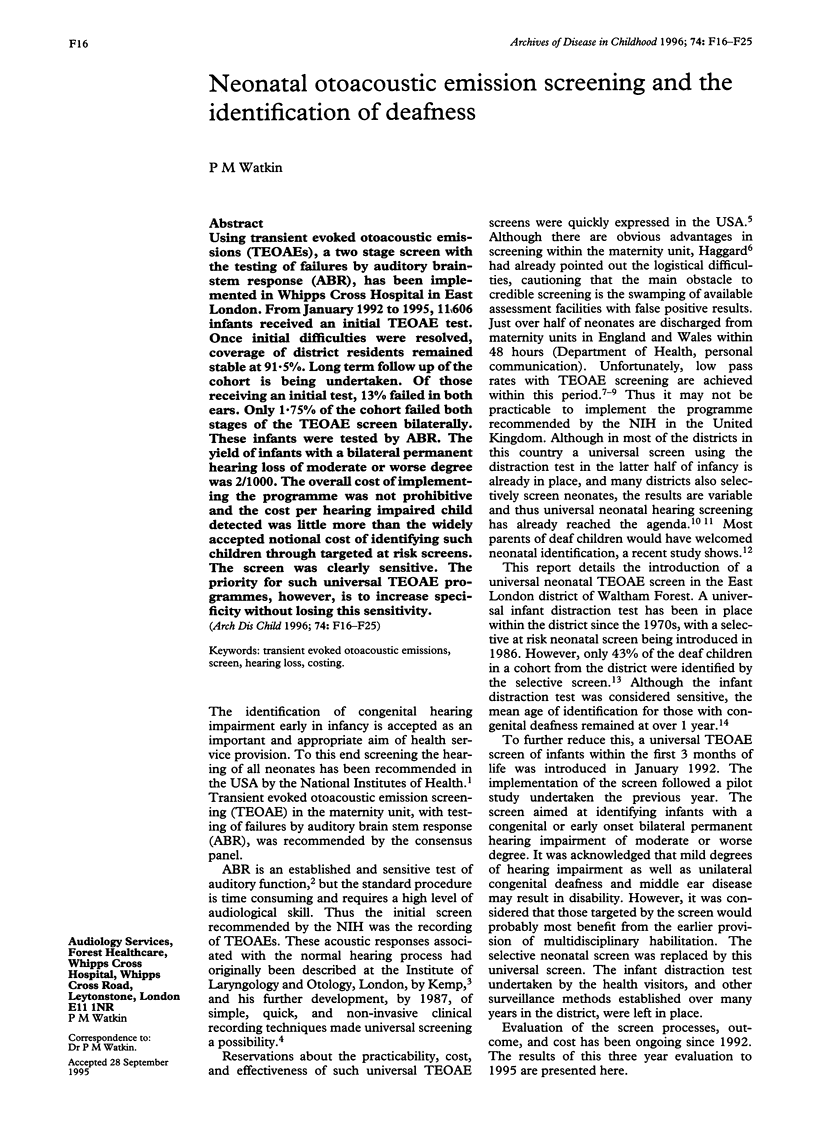
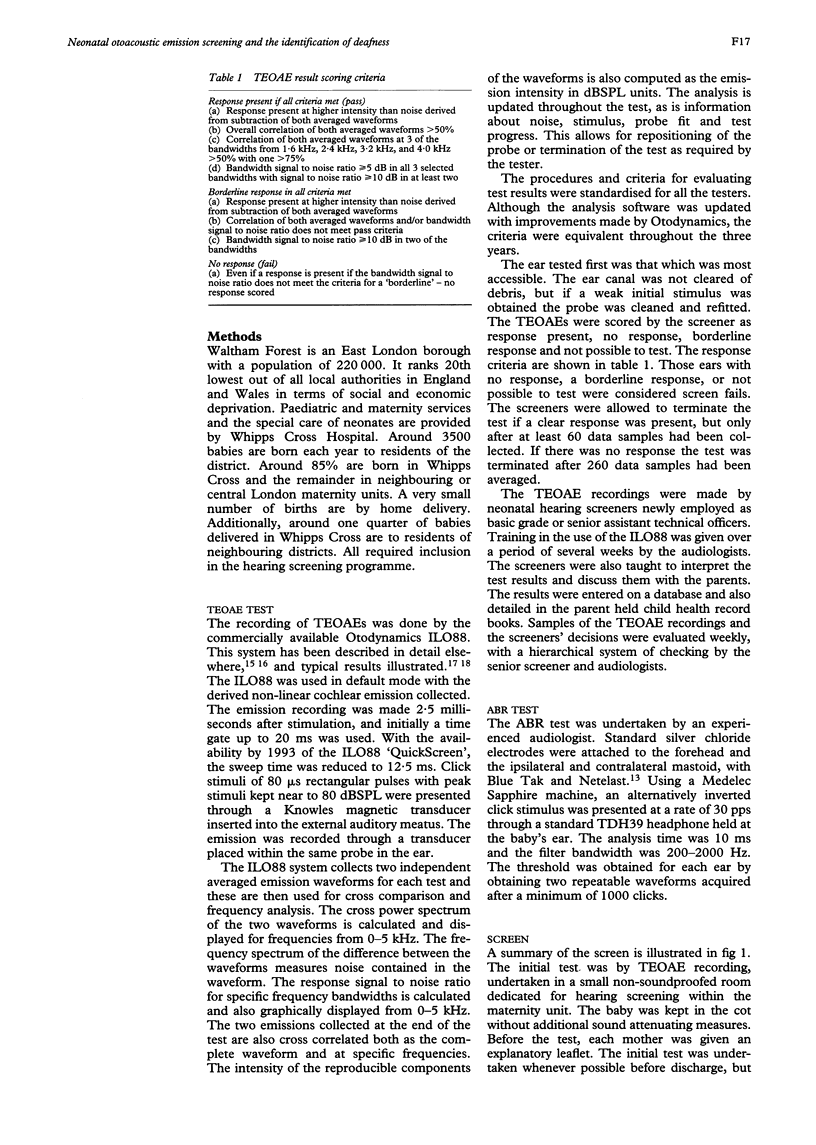
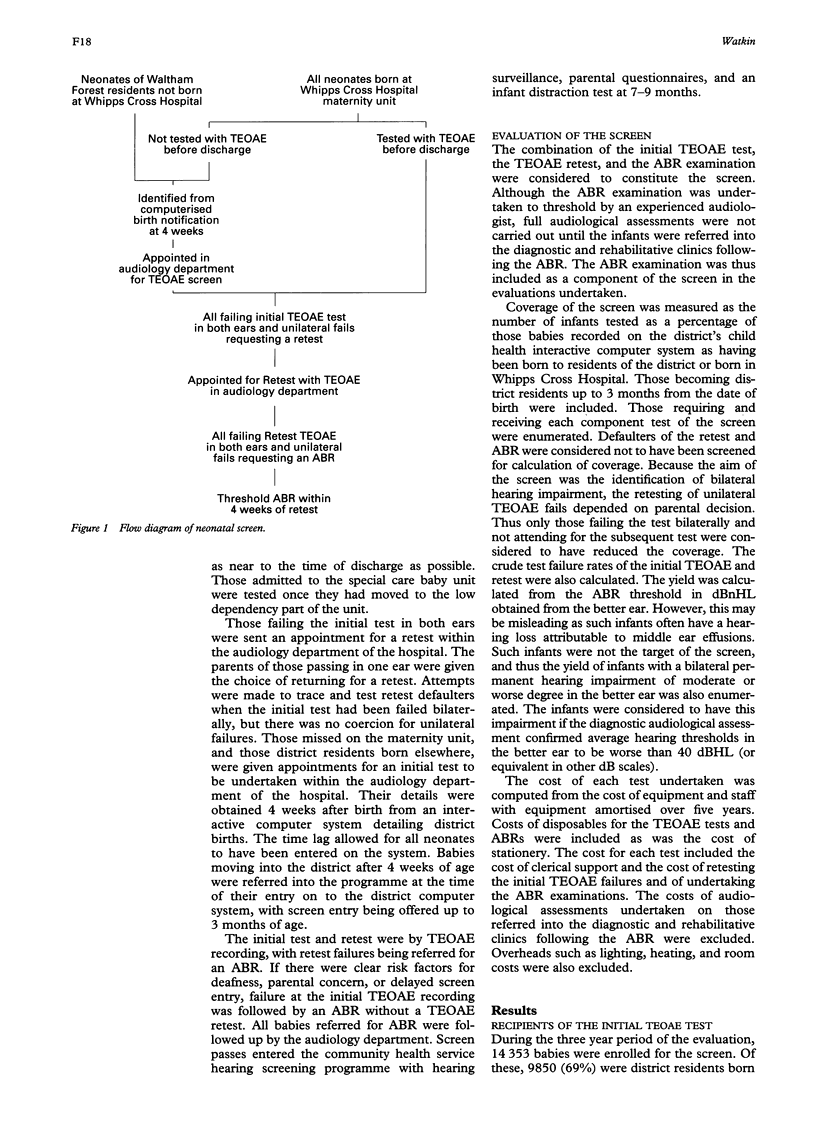
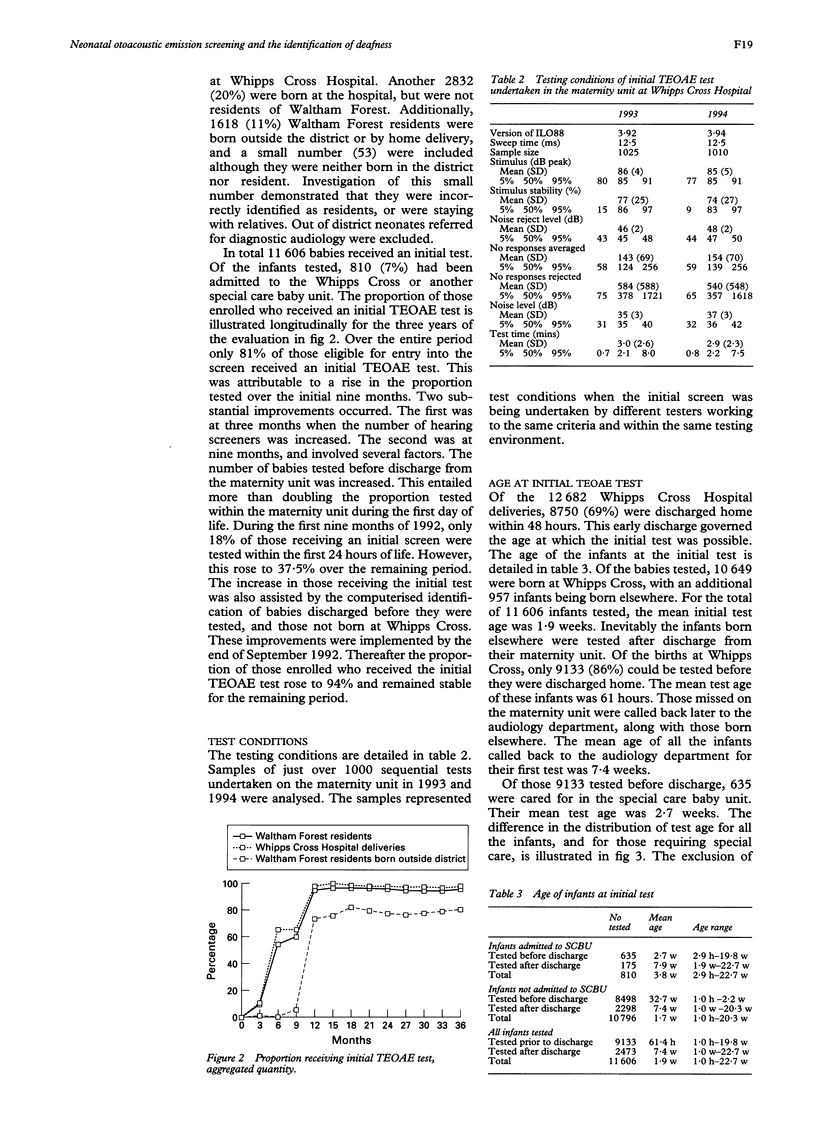
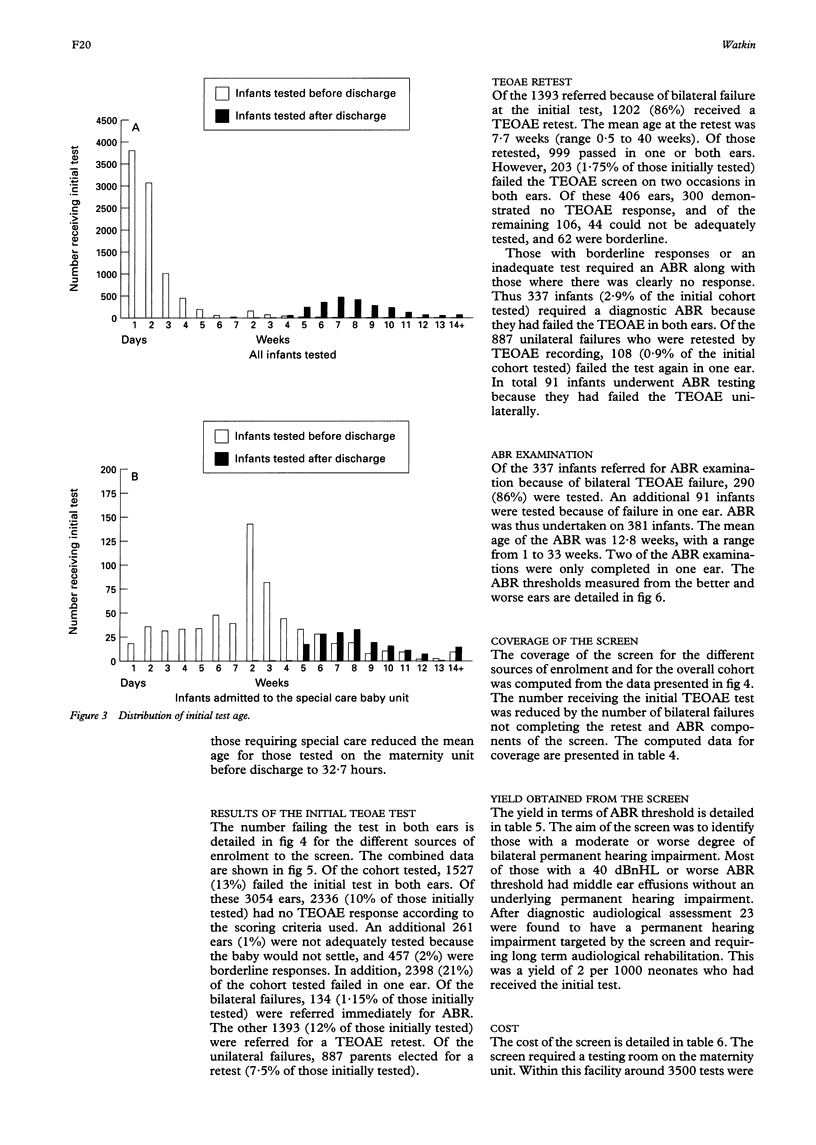
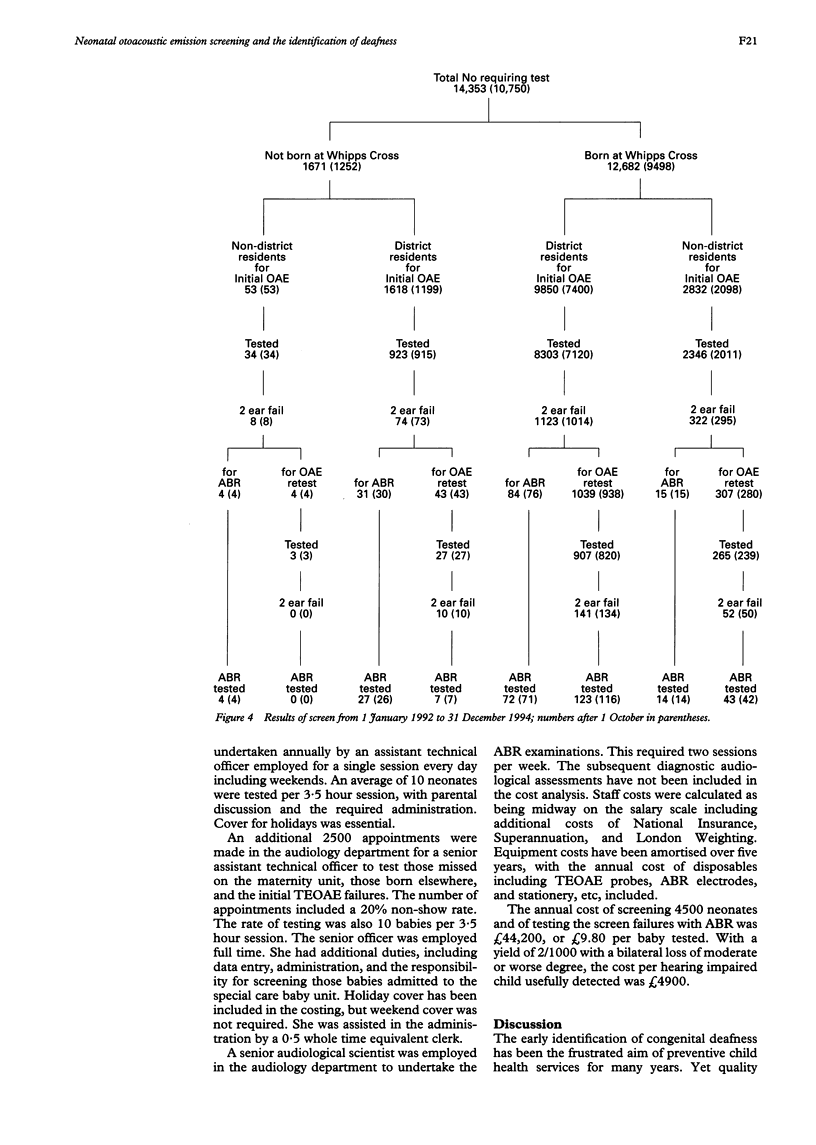
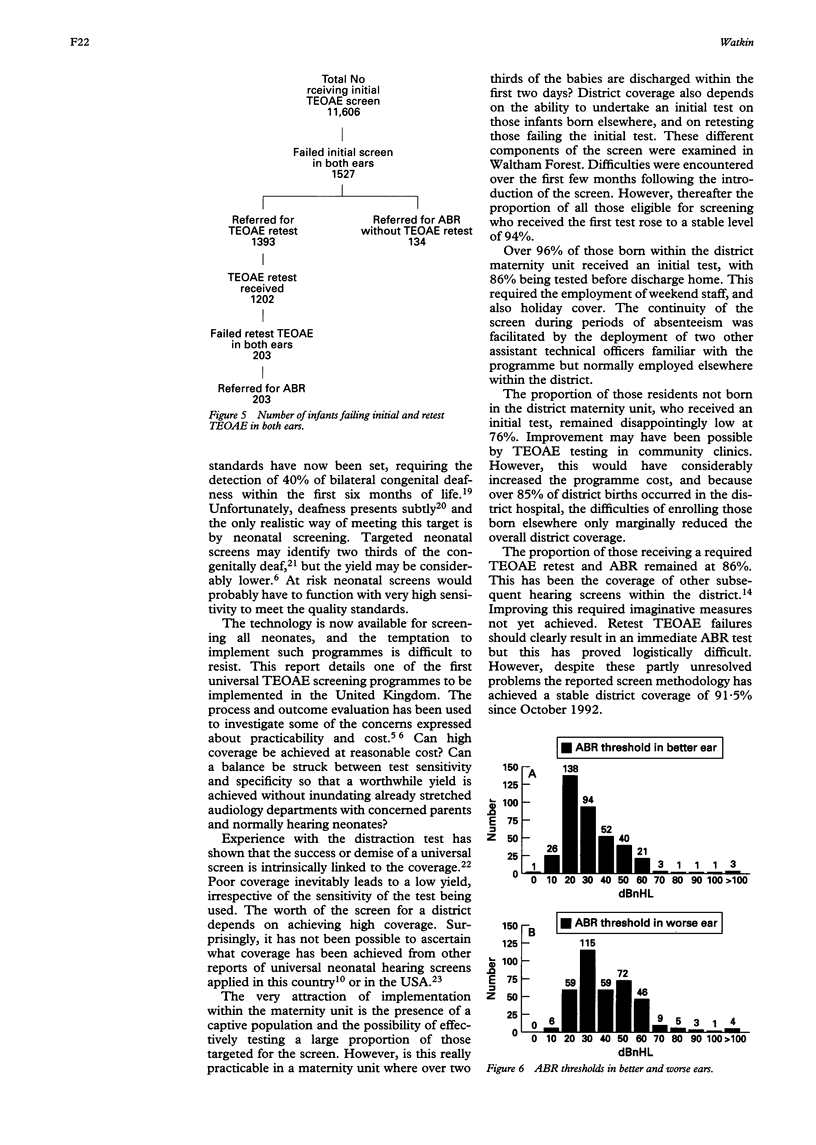
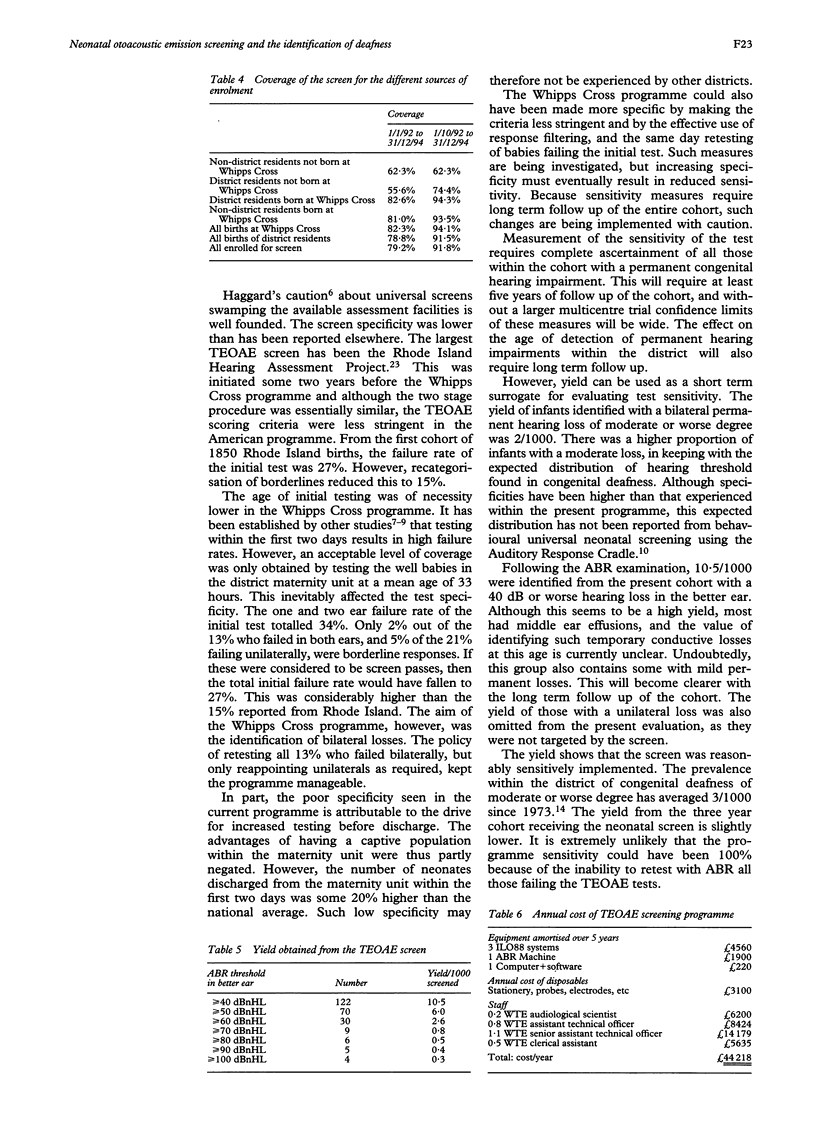
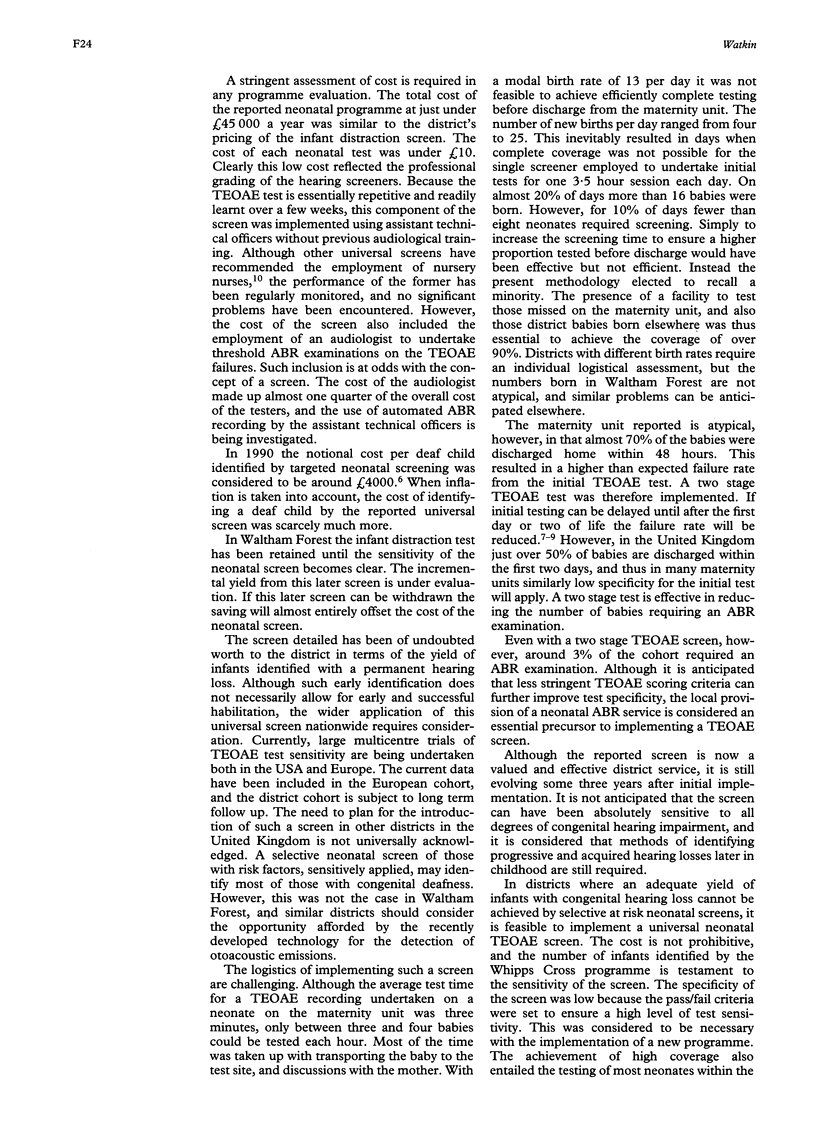
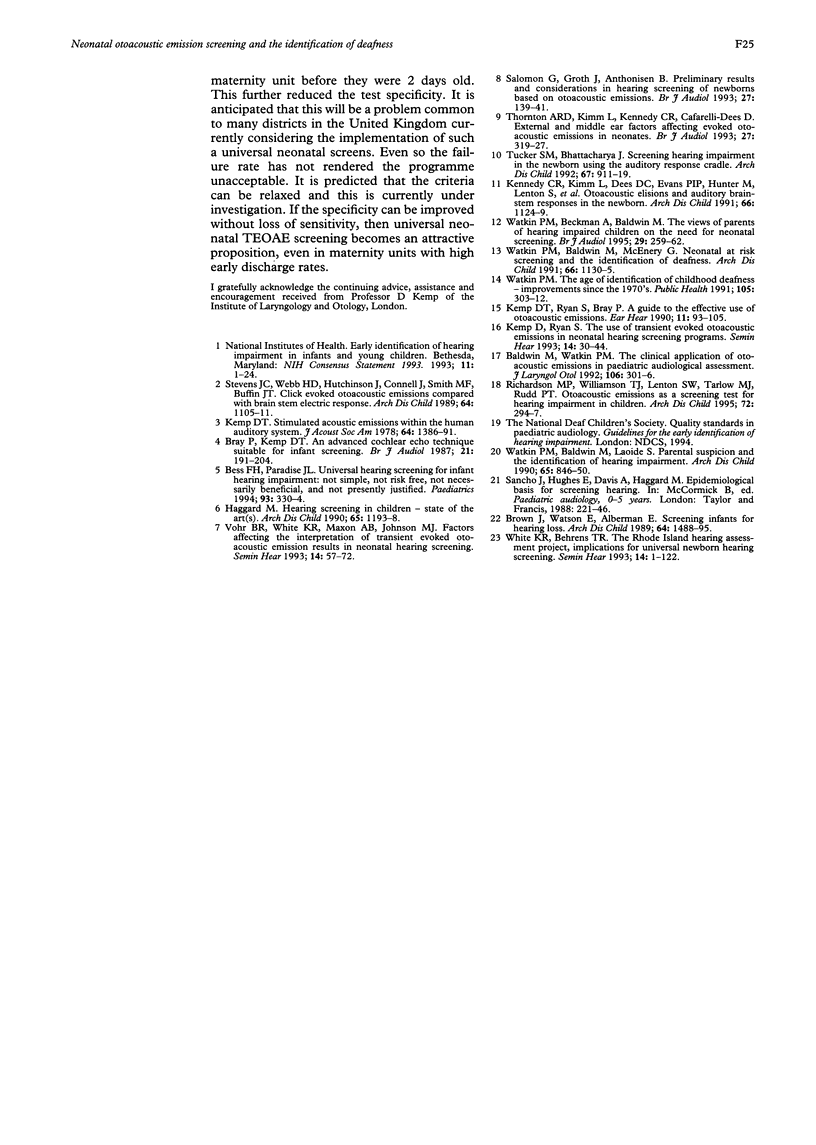
Selected References
These references are in PubMed. This may not be the complete list of references from this article.
- Baldwin M., Watkin P. The clinical application of oto-acoustic emissions in paediatric audiological assessment. J Laryngol Otol. 1992 Apr;106(4):301–306. doi: 10.1017/s0022215100119358. [DOI] [PubMed] [Google Scholar]
- Bess F. H., Paradise J. L. Universal screening for infant hearing impairment: not simple, not risk-free, not necessarily beneficial, and not presently justified. Pediatrics. 1994 Feb;93(2):330–334. [PubMed] [Google Scholar]
- Bray P., Kemp D. An advanced cochlear echo technique suitable for infant screening. Br J Audiol. 1987 Aug;21(3):191–204. doi: 10.3109/03005368709076405. [DOI] [PubMed] [Google Scholar]
- Brown J., Watson E., Alberman E. Screening infants for hearing loss. Arch Dis Child. 1989 Oct;64(10):1488–1495. doi: 10.1136/adc.64.10.1488. [DOI] [PMC free article] [PubMed] [Google Scholar]
- Haggard M. P. Hearing screening in children--state of the art(s) Arch Dis Child. 1990 Nov;65(11):1193–1195. doi: 10.1136/adc.65.11.1193. [DOI] [PMC free article] [PubMed] [Google Scholar]
- Kemp D. T., Ryan S., Bray P. A guide to the effective use of otoacoustic emissions. Ear Hear. 1990 Apr;11(2):93–105. doi: 10.1097/00003446-199004000-00004. [DOI] [PubMed] [Google Scholar]
- Kemp D. T. Stimulated acoustic emissions from within the human auditory system. J Acoust Soc Am. 1978 Nov;64(5):1386–1391. doi: 10.1121/1.382104. [DOI] [PubMed] [Google Scholar]
- Kennedy C. R., Kimm L., Dees D. C., Evans P. I., Hunter M., Lenton S., Thornton R. D. Otoacoustic emissions and auditory brainstem responses in the newborn. Arch Dis Child. 1991 Oct;66(10 Spec No):1124–1129. doi: 10.1136/adc.66.10_spec_no.1124. [DOI] [PMC free article] [PubMed] [Google Scholar]
- Richardson M. P., Williamson T. J., Lenton S. W., Tarlow M. J., Rudd P. T. Otoacoustic emissions as a screening test for hearing impairment in children. Arch Dis Child. 1995 Apr;72(4):294–297. doi: 10.1136/adc.72.4.294. [DOI] [PMC free article] [PubMed] [Google Scholar]
- Salomon G., Groth J., Anthonisen B. Preliminary results and considerations in hearing screening of newborns based on otoacoustic emissions. Br J Audiol. 1993 Apr;27(2):139–141. doi: 10.3109/03005369309077904. [DOI] [PubMed] [Google Scholar]
- Stevens J. C., Webb H. D., Hutchinson J., Connell J., Smith M. F., Buffin J. T. Click evoked otoacoustic emissions compared with brain stem electric response. Arch Dis Child. 1989 Aug;64(8):1105–1111. doi: 10.1136/adc.64.8.1105. [DOI] [PMC free article] [PubMed] [Google Scholar]
- Thornton A. R., Kimm L., Kennedy C. R., Cafarelli-Dees D. External- and middle-ear factors affecting evoked otoacoustic emissions in neonates. Br J Audiol. 1993 Oct;27(5):319–327. doi: 10.3109/03005369309076710. [DOI] [PubMed] [Google Scholar]
- Tucker S. M., Bhattacharya J. Screening of hearing impairment in the newborn using the auditory response cradle. Arch Dis Child. 1992 Jul;67(7):911–919. doi: 10.1136/adc.67.7.911. [DOI] [PMC free article] [PubMed] [Google Scholar]
- Watkin P. M., Baldwin M., Laoide S. Parental suspicion and identification of hearing impairment. Arch Dis Child. 1990 Aug;65(8):846–850. doi: 10.1136/adc.65.8.846. [DOI] [PMC free article] [PubMed] [Google Scholar]
- Watkin P. M., Baldwin M., McEnery G. Neonatal at risk screening and the identification of deafness. Arch Dis Child. 1991 Oct;66(10 Spec No):1130–1135. doi: 10.1136/adc.66.10_spec_no.1130. [DOI] [PMC free article] [PubMed] [Google Scholar]
- Watkin P. M., Beckman A., Baldwin M. The views of parents of hearing impaired children on the need for neonatal hearing screening. Br J Audiol. 1995 Oct;29(5):259–262. doi: 10.3109/03005369509076740. [DOI] [PubMed] [Google Scholar]
- Watkin P. M. The age of identification of childhood deafness--improvements since the 1970s. Public Health. 1991 Jul;105(4):303–312. doi: 10.1016/s0033-3506(05)80215-x. [DOI] [PubMed] [Google Scholar]


